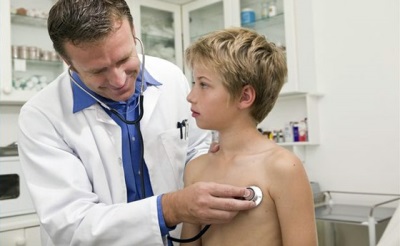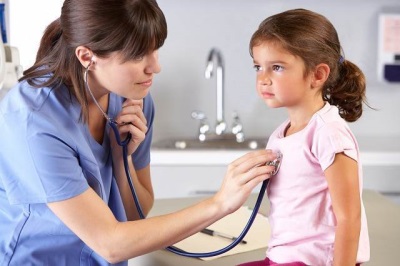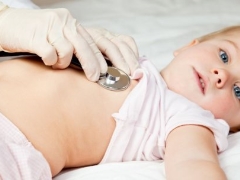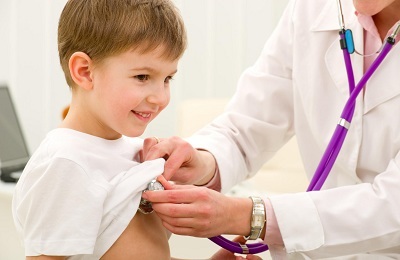Bradycardia of the heart in children
A change in heart rate can affect the well-being of the child and often represents a danger to his health. Although a more frequent problem is an increase in the frequency of heart contractions (abbreviated as HR), but some children also have bradycardia.
What it is
Bradycardia is called the identification of the number of heartbeats in children is much less than the norm. For different age periods this indicator will be yours. For example, in newborns, it is diagnosed by reducing the heart rate below 100 in one minute. In preschool children, it is stated at an indicator of less than 70-80 per minute, and in school children and adolescents - with a frequency of contractions less than 60 times per minute.
The reasons
In children, the rhythm of heart contractions may slow down due to:
- Congenital heart disease.
- Myocarditis or endocarditis.
- Pathologies of the nervous system, for example, meningitis, brain tumors, neurosis, or increased intracranial pressure.
- Poisoning, for example, with lead or nicotine.
- Endocrine diseases, for example, obesity, hypothyroidism or myxedema.
- Overdose of certain medications.
- Infectious diseases, such as flu or scarlet fever.
- Severe hypothermia.
- Occupation of sports professionally (this reason provokes the appearance of moderate bradycardia).
- Disrupted electrolyte balance.
- The rapid growth of the heart, for example, in adolescents.

Symptoms
For many babies, the appearance of such a pathology does not cause any complaints and pronounced changes in the general condition, but is detected only during examination. However, sometimes in addition to changes in heart rate in childhood, it manifests itself:
- Fatigue, even if the load is small.
- Weakness
- Reduced appetite.
- Pale skin.
- Dizziness.
- Complaints of chest pain.
- The occurrence of shortness of breath.
- Deterioration of attention.
- Reduced school performance.
- Fainting
- Unstable blood pressure.
Kinds
This pathology in children is congenital, if it is associated with pathologies that have developed in utero, as well as acquired, if it is a symptom of one of the diseases that have developed in a child after birth.
Depending on the cause of the development of bradycardia, it can be:
- Sinus. This is the most common variant in babies when the heart rate drops, but the rhythm is still set by the sinus node.
- Heterotopic. In this form, the rhythm of contractions is generated not from the sinus, but from another node. Also, this form is associated with obstacles to conduct impulses along the paths inside the heart (blockades).
Assessing the condition of the child and the level of decrease in pulse, emit light bradycardia, moderate and also pronounced form, in which the heart rate per minute is reduced to 40 beats and less.
In addition, children have bradycardia:
- Relative, when the slowing of the heartbeat occurs in certain conditions due to some kind of exposure, for example, with deep breathing, during fever, while staying in the cold or when frightened.
- Absolutely, if the child's heart rate is slowed down constantly, regardless of the influence of any factors on the baby.
Danger of pathology
Slowing the rhythm of the contractions of the heart adversely affects the state of the whole organism, since it is not supplied with blood in the right quantity. Cells that lack oxygen and nutrients due to heart rate reduction begin to die. This primarily harms the nervous system and the heart muscle itself.
Diagnostics
Identify the pathology of the child can:
- By counting the heart rate during palpation of blood vessels on the arm or neck.
- When conducting an ECG, both at the time of treatment, and during long-term monitoring.
- After X-ray of the chest, which will be detected stagnation of blood in the lung tissue.
- With echocardioscopy.

How to treat
If the child is diagnosed with bradycardia, it should be taken regularly to a cardiologist. In mild and moderate form, if no other heart disease is detected, no treatment is required. In situations where a slow heart rate has turned out to be a symptom of a disease, it is important to focus on the treatment of the disease manifested by such a pathology.
In the treatment of children it is important to correct the electrolyte balance and metabolic processes, as well as eliminate oxygen starvation. Any antiarrhythmic drugs to a child with this symptom should be administered only by a cardiologist or a local pediatrician. In some cases, surgical treatment is indicated in which a pacemaker is sewn into the heart muscle.
Prevention
So that the child does not develop this pathology, it is important:
- To timely detect and treat any diseases of the internal organs.
- Do not allow hypodynamia.
- Do not resort to self-treatment and do not change the dosages prescribed by the doctor drugs.
- Engage in calm sports.
- Tell your child about the dangers of smoking.
- Perform tempering procedures.
- Prevent infection by infections.
In the next video of the Union of Pediatricians of Russia, the doctor talks about bradycardia and gives some tips that parents have encountered with this disease.














